Mercedes-Benz 500K Spezial Cabriolet Rescue
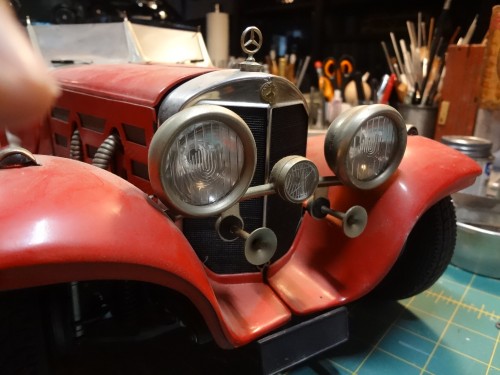
Like so many of its brothers, this Mercedes-Benz Spezial Cabriolet was a neatly built early Pocher kit
mouldering on a shelf in the garage. Its primary short-coming was a heavy coating of dust and dirt.
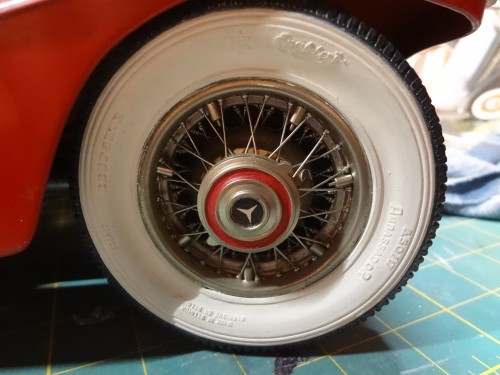
Cigarette smoke conspired with the grime to create a durable coating, but the whitewalls seemed to wipe off
more easily than the painted body. The corrosion on these hubs was a problem, but most metal trim was
easy to clean with chrome cheaner.

The rubber cement that was used on the interior leatherette was dried up and losing its grip.
Windshield needed a wipe.
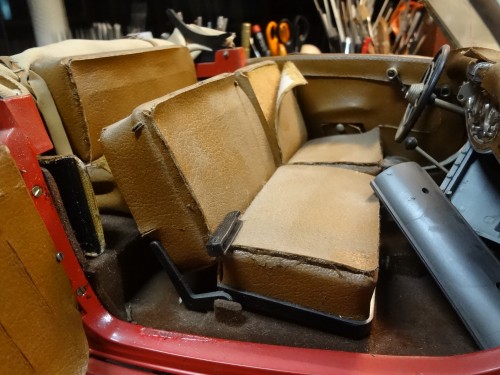
It is easy to see why this Pocher was relegated to the garage, but it shows signs of
careful and thorough assembly.
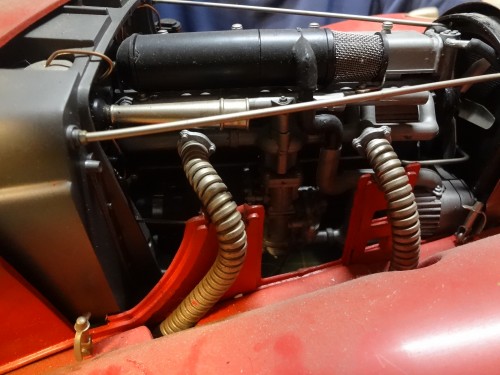
Engine was complete and only needed a good dusting.

A completed crankshaft is always a good sign. The chassis was in good
condition and seemed to be accurately and neatly assembled.

Doors and door latches worked fine, and no pieces were missing. Even so, this interior
was daunting.
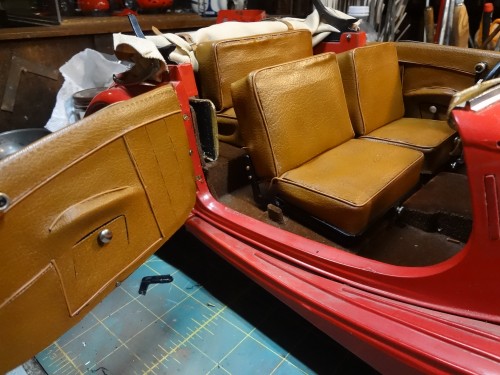
Of course the temptation for the Elves was to create an entirely new, scratch-built interior,
but the assignment on this car was to 'fluff and buff' and to retain as much of the original
model as possible. Gel superglue was the secret weapon with the leatherette. Rubber cement lasted thirty
years; it will be interesting to find out how long the super-glue lasts.

The Elves couldn't resist a bit of foil on the steering wheel. A vacuum cleaner
made quick work of the carpets.
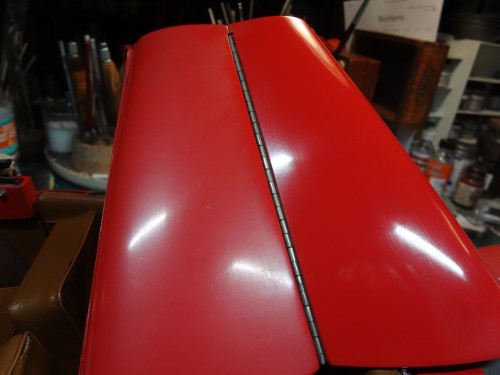
Vintage paint jobs can be tricky, but this one responded to 3M polish and
some rubbing.
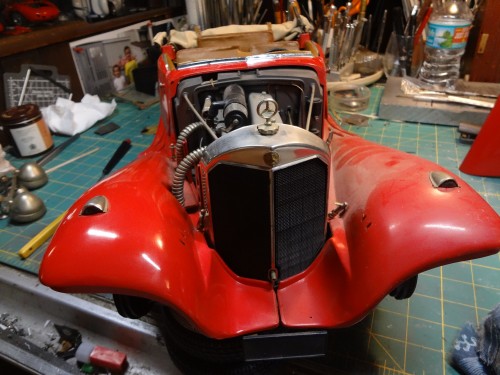
Removing the light bar and the windshield makes the polishing go a bit easier.
Pochers are designed to be easily disassembled, and only the builders with an
affinity for adhesives can interfere with an easy restoration. This builder glued every
single exposed nut and bolt.

With really dirty models, it is a good idea to wash the panels first.
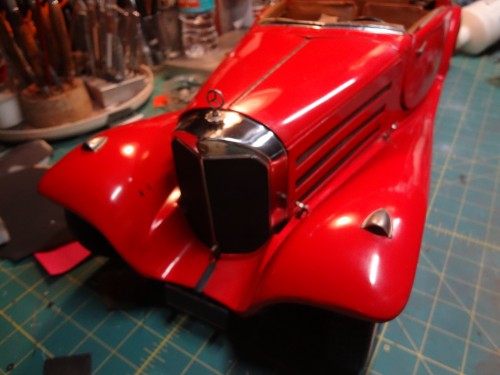
After an initial application, the paint job begins to show promise. The trick
is to avoid rubbing through the paint and exposing the black plastic underneath.
Whatever the paint was--lacquer, enamel--after thirty years it was quite hard and
welll attached to the body.

The headlight assembly was a bit too corroded to pass muster, so replacement
parts were used. the original builder's solution to missing light bulbs was to cover the
holes with masking tape. The Elves decided to raise the standard a little.
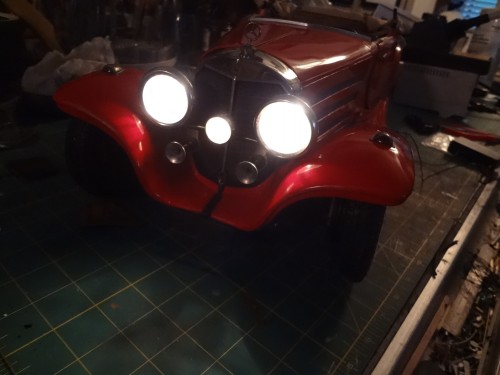
Nothing like some nice, bright headlights to cheer up the Elves. Turning on--or in this
case installing --working lights is similar to the thrill of hearing the engine of an old car start up
after years of silence. The model comes alive, and the cleaning and polishing is rewarded.
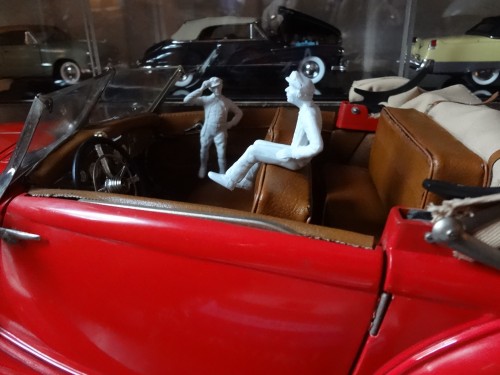
An extremely rare photo of the DMC elves taking a break in the cockpit of a newly finished Mercedes.

Ready to be moved from the top shelf of the bookcase to a shelf at eye-level, or in this case, from the
attic to the den.
RETURN TO ALBUM
| 
